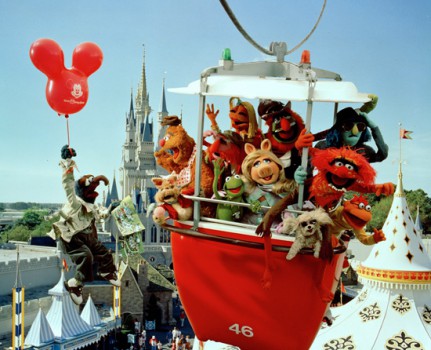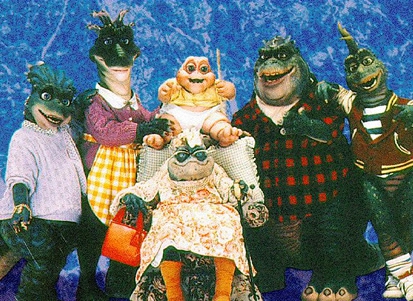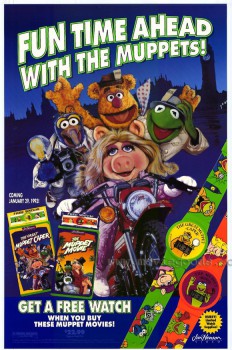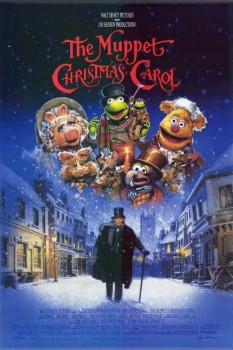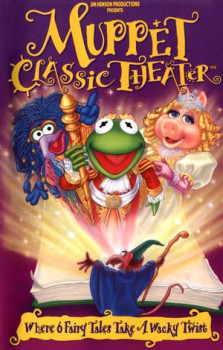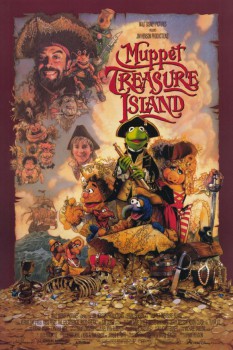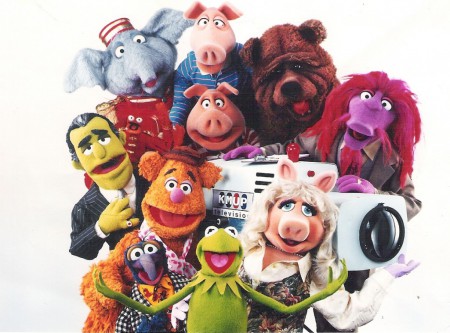Most Wanted Part 2: When Kermit Met Mickey
After over thirty years in show business, Jim Henson had built a legacy with his beloved cast of characters, the Muppets. But by the end of the 1980's, he was in a low place where he felt like he needed a bigger company to support him. Bearing the burden of running the company and being the creative center, Henson felt stretched too thin and was very interested in selling to Disney, who he felt was the best at maintaining characters and keeping them relevant while maintaining quality control. Negotiations began in 1989 with a lot of back-and-forth between Henson and Eisner's Disney. The biggest point of contention in the deal seemed to be the fact that while Disney would own the Muppets characters, Kermit the Frog would still be owned by Henson and available for appearances elsewhere.
While specifics of the deal were being fought over, Henson and Disney embarked on some collaborative efforts. First up was a TV special starring the Muppets on a vacation to Kermit's family reunion. Kermit's friends tagged along when they discovered that the swamp Kermit was heading to was next to Walt Disney World. The Muppets at Walt Disney World aired on May 6th, 1990, as part of The Magical World of Disney on NBC.
Along with the TV special, Henson partnered with Walt Disney Imagineering on a theme park attraction that became Muppet*Vision 3D. The hysterical addition to Disney MGM Studios (now Disney's Hollywood Studios) opened on May 16th, 19991. Sadly, Jim Henson wouldn't live to see the final attraction. He passed away on May 16th, 1990, just ten days after The Muppets at Walt Disney World aired. His passing came as a shock to everyone and seemed to end negotiations between Jim Henson Productions and The Walt Disney Company for a buyout.
Shortly before Henson passed, Disney had agreed to produce a pilot for a series Henson had been pitching for years. Originally called The Natural History Project, Henson had created a concept for a show about a family of dinosaurs living like modern humans, but with a very "toxic lifestyle." The concept was somewhere between The Flintstones and The Simpsons. Disney created a pilot for CBS, who passed on it when it found a home at ABC. Under the title Dinosaurs, the series was a hit lasting for four seasons from April 1991 to October 1994.
While negotiations for Disney to purchase Jim Henson Productions ended with his death, his heirs remained in control of his company and agreed to loan Disney the distribution rights for all of the properties they owned that were produced up to that point. Disney acquired the rights to the first two Muppets films, Muppet Babies, and Fraggle Rock. Disney created an imprint called Jim Henson Home Video. Does anybody remember the green clamshell cases?
During Jim Henson's negotiations with Disney before his death, he had shared a few ideas for future Muppets projects. One of them was a retelling of Charles Dickens' classic A Christmas Carol with a Muppet spin on the tale. Brian Henson was very interested in moving forward on this project and Disney agreed to join him as a partner. For the first time, the center of a Muppet movie would be a human actor rather than a puppet, with many of the Muppets taking supporting roles. It's also missing the celebrity cameos that are a hallmark in most Muppet films. The Muppet Christmas Carol was released on December 11th, 1992 and grossed $27 million at the box office. It wasn't a flop, but also wasn't as big of a hit as Disney expected it to be.
In a similar spirit, Disney and Jim Henson Productions created a direct-to-video production called Muppet Classic Theater. The premise is that the Muppets are putting on a stage show, telling six classic fairy tales in a way only they can. Stories like The Three Little Pigs, Rumplestiltskin, and The Emperor's New Clothes are presented with narration from Gonzo and Rizzo. It was released on VHS on September 27th, 1994.
Disney co-produced another film with Jim Henson Productions in 1996, The Muppets Treasure Island. Brian Henson lead the production, which has many parallels to The Muppet Christmas Carol. Human actors are the stars with Muppets taking supporting roles in this high seas musical adventure. Following its release on February 26th, 1996, the film grossed $34 million making it the second highest grossing Muppet film after the original film.
Not wasting any time, one month after the release of Muppet Treasure Island, Disney and Jim Henson Productions debuted a new series that would see the Muppets return to television. Muppets Tonight debuted on ABC on March 6th, 1996. The series was similar to The Muppet Show with a few notable changes. Instead of taking place in a theater, it was set in a television soundstage. Kermit handed over his emcee duties to a more obscure character named Clifford. Every episode featured a celebrity guest star. The series is notable as the introduction of Pepe the Prawn and Bobo the Bear. ABC aired 10 of the 12 episodes ordered, but ratings weren't good enough to continue the series. Disney was not willing to let the project go so quickly, so they moved the show to The Disney Channel and ordered another season. After a 22-episode run, Disney had to admit that it wasn't a success. The final episode aired on February 8th, 1998.The Jim Henson Company was eager to continue projects with the Muppets, but Disney hadn't seen the numbers they expected and chose not to continue projects with Henson after Muppets Tonight came to an end. It didn't take long for them to find a new partner in Sony, who would coproduce and distribute their next film, Muppets from Space. It was released on July 14th, 1999, and was a critical and commercial flop.
Shortly after in 2000, Jim Henson Productions sold the Muppets characters to a German company called EM.TV who continued to produce mediocre direct-to-video and TV movies such as Kermit's Swamp Years. When EM.TV began to have financial problems, they put the characters up for sale again. While Disney was interested in the purchase, Jim Henson's heirs ended up buying them back in March 2003. However, the new owners didn't have the capabilities of continuing productions with the characters by themselves. They had the opportunity to seek financial backing from a major company again, or find a new buyer...
...To be continued...
Alex is currently watching and reviewing all of Disney’s films in chronological order. You can follow along here.

